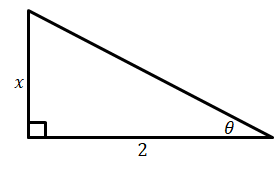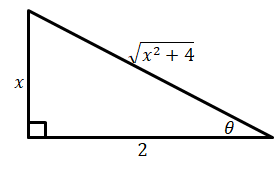Problem 1AYU: cos( 2 )= cos 2 =1=1 Problem 2AYU: 2.
Problem 3AYU: tan 2 = 1cos Problem 4AYU: True or False tan( 20 )= 2tan 1 tan 2 Problem 5AYU: True or False sin( 2 ) has two equivalent forms: 2sincos and si n 2 co s 2 Problem 6AYU: True or False tan( 2 )+tan( 2 )=tan( 4 ) Problem 7AYU: In Problems use the information given about the angle to find the exact value of:
9.
Problem 8AYU: In Problems 920, use the information given about the angle ,02, to find the exact value of:... Problem 9AYU: In Problems use the information given about the angle to find the exact value of:
11.
Problem 10AYU: In Problems 920, use the information given about the angle ,02, to find the exact value of:... Problem 11AYU: In Problems 920, use the information given about the angle ,02, to find the exact value of:... Problem 12AYU: In Problems 920, use the information given about the angle ,02, to find the exact value of:... Problem 13AYU: In Problems use the information given about the angle to find the exact value of:
15.
Problem 14AYU: In Problems use the information given about the angle to find the exact value of:
16.
Problem 15AYU: In Problems use the information given about the angle to find the exact value of:
17.
Problem 16AYU: In Problems 920, use the information given about the angle ,02, to find the exact value of:... Problem 17AYU: In Problems 920, use the information given about the angle ,02, to find the exact value of:... Problem 18AYU: In Problems use the information given about the angle to find the exact value of:
20.
Problem 19AYU: In Problems 21-30, use the Half-angle Formulas to find the exact value of each expression. sin 22.5 Problem 20AYU: In Problems 21-30, use the Half-angle Formulas to find the exact value of each expression. cos 22.5 Problem 21AYU: In Problems 21-30, use the Half-angle Formulas to find the exact value of each expression. tan 7 8 Problem 22AYU: In Problems 21-30, use the Half-angle Formulas to find the exact value of each expression. tan 9 8 Problem 23AYU: In Problems 21-30, use the Half-angle Formulas to find the exact value of each expression. cos 165 Problem 24AYU: In Problems 21-30, use the Half-angle Formulas to find the exact value of each expression. sin 195 Problem 25AYU: In Problems 21-30, use the Half-angle Formulas to find the exact value of each expression. sec 15 8 Problem 26AYU: In Problems 21-30, use the Half-angle Formulas to find the exact value of each expression. csc 7 8 Problem 27AYU: In Problems 21-30, use the Half-angle Formulas to find the exact value of each expression. sin( 8... Problem 28AYU: In Problems 21-30, use the Half-angle Formulas to find the exact value of each expression. cos( 3 8... Problem 29AYU: In Problems 31-42, use the figures to evaluate each function, given that f( x )=sinx , g( x )=cosx ,... Problem 30AYU: In Problems 31-42, use the figures to evaluate each function, given that f( x )=sinx , g( x )=cosx ,... Problem 31AYU: In Problems 31-42, use the figures to evaluate each function, given that f( x )=sinx , g( x )=cosx ,... Problem 32AYU: In Problems 31-42, use the figures to evaluate each function, given that f( x )=sinx , g( x )=cosx ,... Problem 33AYU: In Problems 31-42, use the figures to evaluate each function, given that f( x )=sinx , g( x )=cosx ,... Problem 34AYU: In Problems 31-42, use the figures to evaluate each function, given that f( x )=sinx , g( x )=cosx ,... Problem 35AYU: In Problems 31-42, use the figures to evaluate each function, given that f( x )=sinx , g( x )=cosx ,... Problem 36AYU: In Problems 31-42, use the figures to evaluate each function, given that f( x )=sinx , g( x )=cosx ,... Problem 37AYU: In Problems 31-42, use the figures to evaluate each function, given that f( x )=sinx , g( x )=cosx ,... Problem 38AYU: In Problems 31-42, use the figures to evaluate each function, given that f( x )=sinx , g( x )=cosx ,... Problem 39AYU: In Problems 31-42, use the figures to evaluate each function, given that f( x )=sinx , g( x )=cosx ,... Problem 40AYU: In Problems 31-42, use the figures to evaluate each function, given that f( x )=sinx , g( x )=cosx ,... Problem 41AYU: Show that sin 4 = 3 8 1 2 cos( 2 )+ 1 8 cos( 4 ) Problem 42AYU: Show that sin( 4 )=( cos )( 4sin8 sin 3 ) . Problem 43AYU Problem 44AYU Problem 45AYU Problem 46AYU Problem 47AYU: cos 4 sin 4 =cos( 2 ) Problem 48AYU Problem 49AYU: establish each identify. cot( 2 )= cot 2 -1 2cot Problem 50AYU: establish each identify. cot( 2 )= 1 2 ( cot-tan ) Problem 51AYU: establish each identify. sec( 2 )= sec 2 2- sec 2 Problem 52AYU Problem 53AYU: establish each identify. cos 2 ( 2u ) -sin 2 ( 2u )=cos( 4u ) Problem 54AYU Problem 55AYU: establish each identify. cos( 2 ) 1+sin( 2 ) = cot-1 cot+1 Problem 56AYU: In Problemsestablish each identity.
60.
Problem 57AYU Problem 58AYU Problem 59AYU: establish each identify. cot 2 v 2 = secv+1 secv-1 Problem 60AYU Problem 61AYU Problem 62AYU: establish each identify. 1- 1 2 sin( 2 )= sin 3 +cos 3 sin+cos Problem 63AYU Problem 64AYU Problem 65AYU: establish each identify. tan( 3 )= 3tan tan 3 13 tan 2 Problem 66AYU Problem 67AYU Problem 68AYU Problem 69AYU: solve each equation on the interval 02 . cos( 2 )+6 sin 2 =4 Problem 70AYU: solve each equation on the interval 02 . cos( 2 )=22 sin 2 Problem 71AYU: solve each equation on the interval 02 . cos( 2 )=cos Problem 72AYU: solve each equation on the interval 02 . sin( 2 )=cos Problem 73AYU Problem 74AYU: solve each equation on the interval 02 . cos( 2 )+cos( 4 )=0 Problem 75AYU Problem 76AYU: solve each equation on the interval 02 . cos( 2 )+5cos+3=0 Problem 77AYU Problem 78AYU: solve each equation on the interval 02 . tan( 2 )+2cos=0 Problem 79AYU: find the exact value of each expression. sin( 2 sin 1 1 2 ) Problem 80AYU: find the exact value of each expression. sin[ 2 sin 1 3 2 ] Problem 81AYU: find the exact value of each expression. cos( 2 sin 1 3 5 ) Problem 82AYU: find the exact value of each expression. cos( 2 cos 1 4 5 ) Problem 83AYU: find the exact value of each expression. tan[ 2 cos 1 ( 3 5 ) ] Problem 84AYU: find the exact value of each expression. tan( 2 tan 1 3 4 ) Problem 85AYU Problem 86AYU: find the exact value of each expression. cos[ 2 tan 1 ( 4 3 ) ] Problem 87AYU Problem 88AYU: find the exact value of each expression. cos 2 ( 1 2 sin 1 3 5 ) Problem 89AYU Problem 90AYU: find the exact value of each expression. csc[ 2 sin 1 ( 3 5 ) ] Problem 91AYU Problem 92AYU Problem 93AYU Problem 94AYU: Constructing a Rain Gutter A rain gutter is to be constructed of aluminum sheets 12 inches wide.... Problem 95AYU: Laser Projection In a laser projection system, the optical angle or scanning angle is related to... Problem 96AYU Problem 97AYU: Projectile Motion An object is propelled upward at an angle , 45 90 , to the horizontal with an... Problem 98AYU Problem 99AYU Problem 100AYU: Geometry A rectangle is inscribed in a semicircle of radius 1 See the illustration. (a) Express the... Problem 101AYU Problem 102AYU Problem 103AYU Problem 104AYU Problem 105AYU: If z=tan 2 , show that sin= 2z 1+ z 2 . Problem 106AYU Problem 107AYU Problem 108AYU Problem 109AYU Problem 110AYU Problem 111AYU Problem 112AYU format_list_bulleted



 Calculus: Early TranscendentalsCalculusISBN:9781285741550Author:James StewartPublisher:Cengage Learning
Calculus: Early TranscendentalsCalculusISBN:9781285741550Author:James StewartPublisher:Cengage Learning Thomas' Calculus (14th Edition)CalculusISBN:9780134438986Author:Joel R. Hass, Christopher E. Heil, Maurice D. WeirPublisher:PEARSON
Thomas' Calculus (14th Edition)CalculusISBN:9780134438986Author:Joel R. Hass, Christopher E. Heil, Maurice D. WeirPublisher:PEARSON Calculus: Early Transcendentals (3rd Edition)CalculusISBN:9780134763644Author:William L. Briggs, Lyle Cochran, Bernard Gillett, Eric SchulzPublisher:PEARSON
Calculus: Early Transcendentals (3rd Edition)CalculusISBN:9780134763644Author:William L. Briggs, Lyle Cochran, Bernard Gillett, Eric SchulzPublisher:PEARSON Calculus: Early TranscendentalsCalculusISBN:9781319050740Author:Jon Rogawski, Colin Adams, Robert FranzosaPublisher:W. H. Freeman
Calculus: Early TranscendentalsCalculusISBN:9781319050740Author:Jon Rogawski, Colin Adams, Robert FranzosaPublisher:W. H. Freeman
 Calculus: Early Transcendental FunctionsCalculusISBN:9781337552516Author:Ron Larson, Bruce H. EdwardsPublisher:Cengage Learning
Calculus: Early Transcendental FunctionsCalculusISBN:9781337552516Author:Ron Larson, Bruce H. EdwardsPublisher:Cengage Learning




